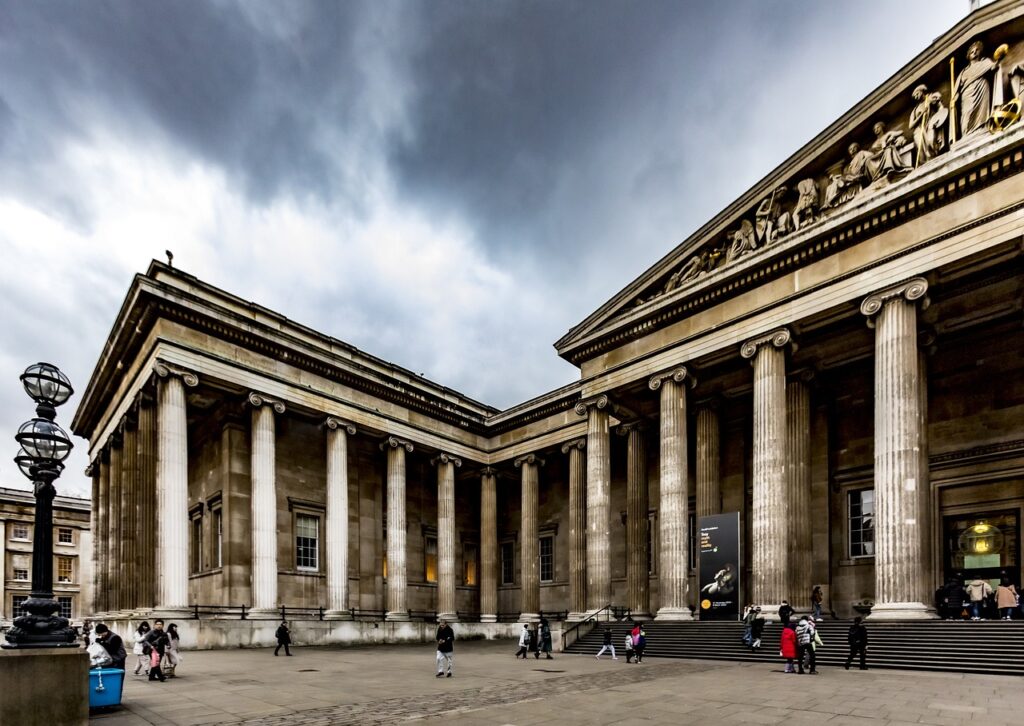The British Museum’s Theft Scandal: Irony or Karma?

London’s British Museum, once again, finds itself ensnared in a theft scandal. This time, it involves a staff member accused of swiping jewels from a storeroom. But the story runs deeper than just another theft at a high-profile institution. It evokes a sense of poetic justice for a museum whose legacy is steeped in the questionable acquisitions of colonial-era treasures.
The unnamed worker allegedly made away with items ranging from gold jewelry to gems of semi-precious stones and glass, spanning 15th century B.C. to the 19th century A.D. Interestingly, these stolen items weren’t on public display and were primarily kept for academic and research purposes. The London police force is on the case, but no arrests have been made yet.
A History of Thefts
But this is not the first time the British Museum has faced theft woes. In 2017, it announced the loss of a diamond Cartier ring worth almost a million dollars, six years after the fact. The year 2004 saw the theft of 15 pieces of Chinese jewelry during opening hours, and in 2002, a 2,500-year-old Greek marble head was taken from atop a plinth. The British Museum, despite its security measures, has proven to be an irresistible target for thieves.
It’s not just the British Museum that has been the victim of theft. European museums, in general, seem to be hotspots for heists. Last year, a cache of almost 500 ancient gold coins were stolen from the Celtic and Roman Museum in Manching, Bavaria. In 2019, Dresden’s Green Vault museum suffered a loss of about €100 million worth of jewels.
Christopher A. Marinello, an art recovery lawyer, stated that thefts from museums are a major global issue and often involve staff. He described the recent incident at the British Museum as “extremely embarrassing and alarming.” But for some, this incident might be seen as a taste of the museum’s own medicine.
The Irony of Colonial ‘Theft’
The British Museum, one of the world’s most comprehensive repositories of art and artifacts, is no stranger to controversy. Founded in 1753, the museum’s vast collection is a testament to the British Empire’s global reach. But this also means that many of the precious items it houses are relics of a colonial past, taken from countries around the world. Its holdings of artifacts like the Elgin Marbles from Greece and the Benin Bronzes from Nigeria have sparked calls for repatriation. These items, critics argue, were looted during the colonial era and should be returned to their rightful countries.
The recent theft from the storeroom might serve as a subtle reminder, bordering on irony, that the British Museum itself has been associated with a history of ‘theft,’ albeit in a colonial context. As the museum tries to prevent future thefts and works to recover the stolen items, it might be time to address the long-standing issue of its colonial-era acquisitions.
While the thefts and the museum’s colonial past are worlds apart, the current incident serves as a subtle and somewhat sarcastic reminder of the institution’s legacy. Perhaps it is time for the British Museum to not only invest in better security and collections records but also to take a long, hard look at the historical context of its vast collection and consider returning some of its treasures to their rightful owners. In doing so, it might build a stronger museum that’s not just secure against theft but also on the right side of history.



